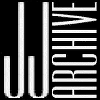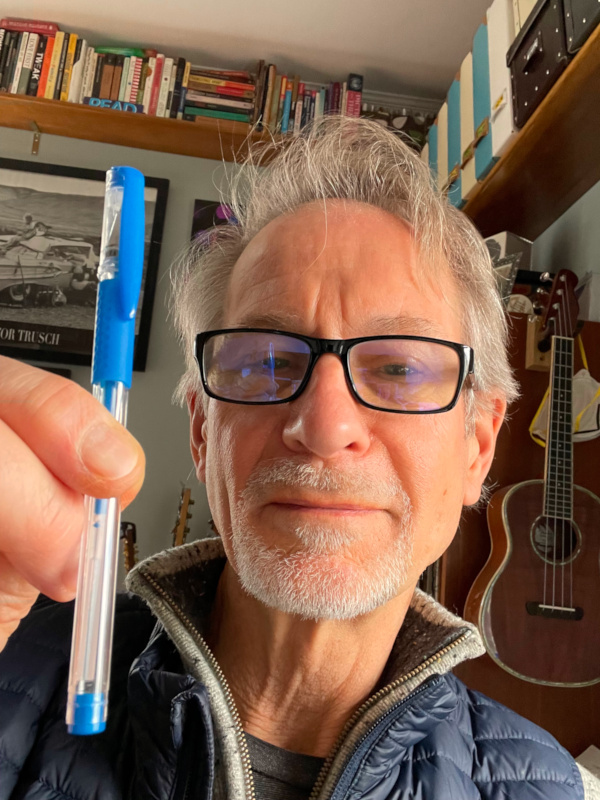
 |
Graham Maby’s teaser |
 Here is an excerpt from Graham Maby’s upcoming memoir, tentatively titled Call Me Maby: A Bass Odyssey.
Here is an excerpt from Graham Maby’s upcoming memoir, tentatively titled Call Me Maby: A Bass Odyssey.
Chapter 13 (excerpt)
Joe Jackson was only twenty-three years old when he wrote most of the songs that became his first album. I knew then and still feel now that it’s a fine debut. The growth I saw in him as a songwriter was startling. The songs we’d recorded a couple of years earlier at Guildford University were good, well-arranged and musically interesting. But there was no clear style, nothing that unified the material, not even Joe’s voice, which may have been the weakest link on those recordings. Due to his lack of vocal confidence, he’d had three of those songs sung by others, including me. But in two years he’d raised the bar significantly. Writing with a specific instrumental lineup in mind, he was on a roll. The arrangements were spare and clean, no solos necessary. The melodies were catchy, the lyrics unsentimental and witty. And now his lead vocals were sounding confident, cocky even. “Sunday Papers,” “One More Time,” “Look Sharp,” and “Fools in Love” remain fan favorites decades later. Not to mention the one song that became Joe’s signature tune...
“Is She Really Going Out With Him?” had at least two sources of inspiration that I’m aware of. One: the Damned’s 1977 single, “New Rose,” begins with singer Dave Vanian uttering those very words; and two: my sister’s new boyfriend, Mick, who, in later years seemed proud to have been referenced on a hit record, albeit as a “gorilla.”
The song became our first single, with an album outtake, “You Got the Fever,” as the B side. A photo shoot for the single’s sleeve yielded an oversaturated image of skinny Joe standing against a diagonal black-and-white striped background, his hair looking oddly dark. It’s a poor likeness but a striking cover.
From the outset, reviews of the single were positive. The music press, led by the NME (New Musical Express) and Melody Maker, gave the thumbs-up. In the October 28 edition of Sounds, Giovanni Dadomo selected “Is She Really...” as Single of the Week. Then we began to hear ourselves on the radio.
After finishing the album, now officially called Look Sharp!, we played our first London appearance in Notting Hill Gate on August 30. Two weeks later came a couple of local gigs, including our hometown debut at the John Peel pub in Gosport. The buzz of publicity and radio play brought a horde of loyal locals, who made us feel like rock stars already. That feeling of being on the verge of something big was palpable.
In late September we embarked on a thirteen-date UK tour as the opening act for “mod revival” band the Pleasers. All we knew about them was that their new single was getting some airplay. However, so was ours. By the time the tour was over, a month later, “Is She Really...” was in heavy rotation on the radio, and it was clear that a significant proportion of the audience was there to see us — the opening act. It was awkward for all concerned.
October was the busiest month I’d ever experienced as a musician. As well as dates on the Pleasers tour, we’d started playing Monday nights at the Nashville Room in South Kensington, opening for various bands like Eric Bell (formerly of Thin Lizzy), and on Tuesdays we headlined at the Hope and Anchor, in Islington. Both venues were booked by Albion, the John Telfer connection immediately paying off. These gigs were great showcases for the band, and we soon began to draw our own crowd. By November and December, we were headlining Saturday nights at the Nashville.
As our confidence grew, so did the intensity of our shows. Gary, the resident heartthrob, was a lunatic onstage, animated and often hilarious. Joe became more comfortable with his own stage persona. He’d learned from his experience backing cabaret artists how to deal with hecklers and had just the right barb to throw back at any hostile comment (“Seems like in every bunch of roses there’s always one prick!”). From the start, he had a keen sense of the theatrical. Onstage he’d pull out the latest edition of one of Britain’s inexplicably popular trashy tabloids, like the Sunday People or the News of the World (affectionately known as the “News of the Screws”). As Gary played the opening chords to “Sunday Papers” (these weekly rags were issued on Sundays), Joe would read aloud selected highlights (lowlights?) from the paper, and then during the song he’d tear it to pieces, throwing the shreds in the air. Visually very memorable.
At another Nashville Room show, Joe addressed the increasingly irritating comparisons certain music journalists were making between him and Elvis Costello. Having made some thinly veiled reference to this controversy, Joe then removed his jacket and turned his back to the audience. Written in large black letters on the back of his white shirt was: ELVIS WHO? The crowd ate it up.
The intriguingly named Hope and Anchor was a popular North London pub basement venue. Small, dank, and airless, it resembled Liverpool’s Cavern Club in the early Sixties, or so I imagined. Back then you could smoke in such places and believe me, they did. I was one of “they.” The dressing room on stage right was tiny. Once the punters came in and the place filled up, there was no way to get out of there, even if you were desperate for a pee. Though otherwise bereft of all but the most basic comforts (a table and a few chairs), the dressing room did have a tiny wash basin which we, and I’m sure every other band, used when fighting through the masses to get to the loo was not a viable option. Strangely, though, right above the sink was not a mirror but a square hole in the wall, through which you could see people entering or leaving the venue. Occasionally someone might catch your eye through the hole, might even say something to you, oblivious of what you were doing on your side of the wall.
Halfway through the Pleasers tour, we were soundchecking at Dundee College of Technology. The venue was a large hall in an ancient wood and stone campus building with a stage in one corner, clearly not designed for amplified music. We were struggling to get something close to an acceptable sound but, partly due to the angle of the stage and the positioning of the PA speakers, there was frequent feedback from the vocal mics. On top of that we were running out of time: as the opening act we were allocated only a short soundcheck, thirty minutes if we were lucky. As we tried to sort out the problems, a silver-haired, apron-clad cleaning lady swept the floor, gradually getting nearer to the stage. Joe, his frustration building, finally lost it. “I give up. I have no idea what’s wrong!” Without missing a beat, the cleaning lady paused and looked up at him, leaning on her broom. “I’ll tell you what’s wrong,” she said stridently, in a heavy Scottish brogue, staring Joe down. “It’s too bloody loud!”
A couple of days after being chastened by an irritable Scots cleaning lady, our spirits were lifted by some amazing news. Still “up North” on our way to a gig in Newcastle, we tuned the van’s radio to listen to the long-running Sunday BBC chart show Pick of the Pops, featuring DJ Alan “Fluff” Freeman. (I’d followed Fluff’s countdown faithfully for years since becoming a Beatles fan.) John Telfer was certain the single had made it into the Top 20 but we needed to hear it from the highest authority, Fluff himself. In the middle of nowhere, we pulled over before driving through a tunnel so we wouldn’t lose radio reception. Freeman’s warm, rich voice, the voice I’d heard throughout my teens announcing the latest Beatles’ hit, finally put us out of our misery: “And a new entry at number thirteen...” We’d made it to number thirteen! For the next few minutes that van was heaving with celebration.
Copyright © 2025 Graham Maby. All rights reserved. Used by permission.